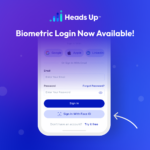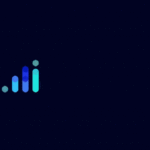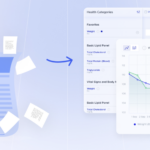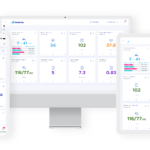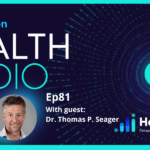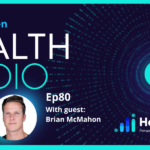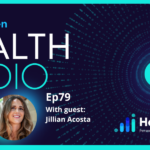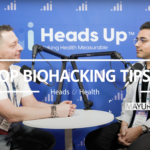How a cancer diet of eating ketogenic plus tracking the glucose ketone index helped my husband gain back control of his body and health.
Our lives were turned upside down when my husband was diagnosed with cancer at the end of 2014. The future looked bleak and we didn’t know where to turn to for hope, for help. My husband sat me down and showed me the passwords to all things financial. We hired an attorney to help us with a will. Then we drove to the beach in Pacifica with our 10-year-old son to watch the ocean waves crash against the sand. I sat, shivering from the cold wind, wondering how many more times we would be able to do this as a family.
After the initial shock, we decided to confront this problem together, one day at a time.
Our desperation turned into action. We decided on a multi-pronged approach to fighting his cancer.
Cancer diet – discovering keto
A good friend suggested we look into the ketogenic diet, as it might help starve the cancer cells and possibly shrink tumors. My husband was diagnosed with Stage 2B Hodgkin’s Lymphoma; the size of his tumor was 8 cm. Could his tumor possibly shrink with the addition of the keto diet? That very night after our friend left, we both began to cram, like hyper-diligent grad students. We absorbed everything we could find online about how to eat keto. What was ketosis? How did one eat this way?
At the time, there wasn’t an abundance of information about the ketogenic diet. But we were happy to discover e-books by Miriam Kalamian, Ellen Davis and Patricia Daly, with keto recipes and information for people with cancer. A short while later, my sister told me about Jimmy Moore’s Keto Clarity book, a tremendous resource, which opened our eyes even more.
In Miriam Kalamian’s book, she asserted that “the diet alone is not a cure…instead it’s intended to slow down the progression of disease while offering you a better quality of life.”
Armed with this knowledge, we decided to use keto in conjunction with chemo and radiation treatments.
And we wanted to do this right.
One of the first things we did was consult with Miriam Kalamian (who by the way, now has a more current and incredibly informative book–Keto for Cancer–deemed by Dr. Thomas N. Seyfried as “a masterpiece.” ). She helped us navigate the overwhelm we felt during this time, trying to learn how to eat and cook keto specifically for cancer.
Next, we ordered the Precision Xtra device to measure blood glucose and ketones. To measure the amount of protein, carbs, and fat entering my husband’s body, we purchased a kitchen scale. MyFitnessPal helped us track these macronutrients and ensure his carbs were limited to 12 net grams. Borrowing from the Paleo/Primal template, we sought to buy the highest quality whole foods, avoiding processed and fast food, grains, and sugar. (Now we’re in love with the Keto-Mojo, because the blood ketone strips are so much more affordable, allowing us to check our ketones every day. Sometimes, even more than once!)
Since I also had some weight to lose around my midsection, I decided to join my husband in eating keto.
Miriam’s book introduced us to Dr. Thomas Seyfried’s glucose ketone index (GKI) as a way to monitor progress with the keto diet. The glucose ketone index measures the ratio between blood glucose and ketones. At the time my husband kept his GKI, per Dr. Seyfried, between 1 and 2. Now we’ve learned what Dr. Seyfried calls “therapeutic ketosis” — where it’s optimal to have a GKI of under 1 — and this is achieved through at least three days of fasting up to five days or more, ideally water-only, a way to “blast the crap out of incipient tumors.”
At the time, my husband couldn’t find a better way to track his GKI other than recording it in a paper notebook and Evernote. But tracking the data was worth it. In his words: ”Eating keto and tracking my progress helped me gain back a sense of control of my body and health.”
Looking back, a tool like Heads Up Health would have made this much easier and informative–especially with the ability to graph and correlate GKI and other health metrics.
Physically and mentally, we both began to look and feel better. After a year of eating strict keto, along with conventional treatments, his tumor shrunk from 8 cm to 1 cm! The oncologist and nurses were awed by how fast he improved and that he didn’t experience the normal side effects of nausea and hair loss. Encouraged by PET scans showing the tumor shrinking, we felt motivated to keep on keto-eating.
Also a nice surprise: as the one cooking, I also ate this way, delighted to discover that my pre-diabetic blood glucose levels went down so much that I’m no longer in the pre-diabetic range per my last A1C test results (although what’s “normal” in the conventional range is not where I’d like to be just yet, still aiming for a more optimal range). Another nice bonus: no longer was I using multiple inhalers daily for my asthma…and I lost some weight, especially around my waist!
Now two full years in remission, my husband remains focused on keto-eating as a way to maintain good health. His goals are different, but the need to monitor and see trends remain. As a self-professed data nerd, he enjoys finding new ways to use data about his health and life to make small improvements.
Tracking and monitoring our health markers is now a regular part of our lives. We use Heads Up Health to track our glucose ketone index, fasting glucose, ketones, weight, and more. Recently, we added fasting to our health regimen. To stay motivated, we use the Heads Up Health Fasting Timer. Fasting, we’ve learned, is also a cool therapeutic tool that has a host of benefits, including anti-aging, cancer-prevention, and help with insulin resistance. But that’s a whole other blog post.
Now past this cancer scare, we’re excited about the life ahead for ourselves and our family. It’s caused a whole new shift in priorities.The cancer was a catalyst in us deciding to live more simply, free from the chains of traditional office jobs and hefty mortgages. My husband quit his full-time job and we’re selling our house to move into a RV with our kid, planning to travel the world, working part-time as digital nomads. More than ever, we feel empowered because we’ve realized health is the ultimate wealth!
About Heads Up Health
Heads Up Health is a powerful tool designed to help individuals take control of their health data. The web-based software can integrate medical records, wearables, apps and any other health metrics that are important to track. The software provides dashboards, trends, alerts and other tools to help individuals take a data-driven and self-directed approach to managing their health. Additionally, the product has been optimized for those following low-carb and ketogenic diets. Sign up for a free trial at www.headsuphealth.com.
[maxbutton id=”6″]
References
- Precision Xtra glucose and ketone meter
- Keto-Mojo
- Tracking the Glucose Ketone Index – Heads Up Health: Learn more about the G/K Index, why it’s helpful for more than just cancer—e.g., diabetes, weight loss, and more–and how to track your GKI.
- Miriam Kalamian:
- Keto for Cancer: Ketogenic Metabolic Therapy as a Targeted Nutritional Strategy by Miriam Kalamian
- Ellen Davis: http://www.ketogenic-diet-resource.com/cancer-diet.html
- Patricia Daly: https://patriciadaly.com/
- Keto Clarity, by Jimmy Moore
- An Alternative View of Cancer | Pt. 1 (HVMN podcast)
- Thomas N. Seyfried, featured on Jimmy Moore’s podcast: http://www.thelivinlowcarbshow.com/shownotes/1172/dr-thomas-seyfried-on-killer-carbs-ketosis-as-a-cancer-cure-episode-302/







